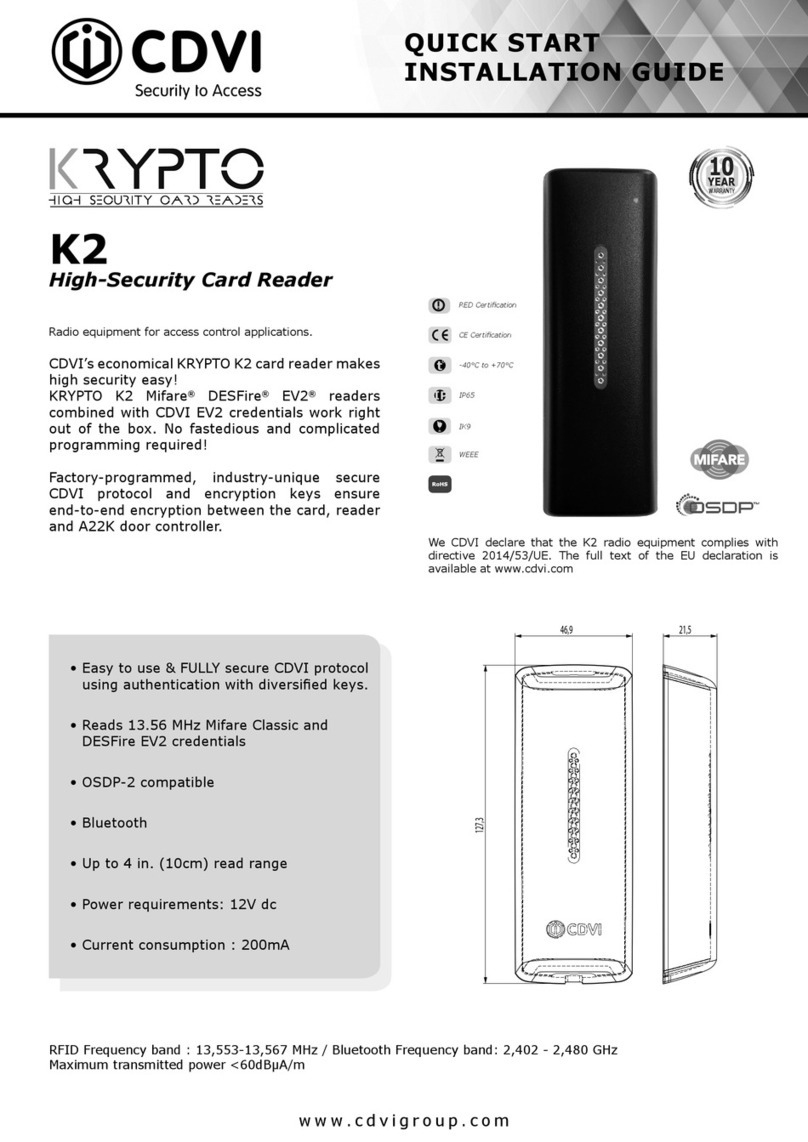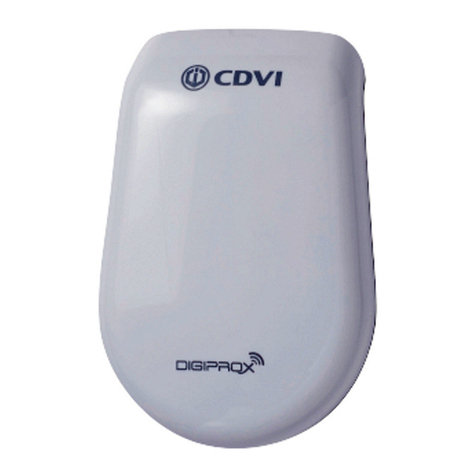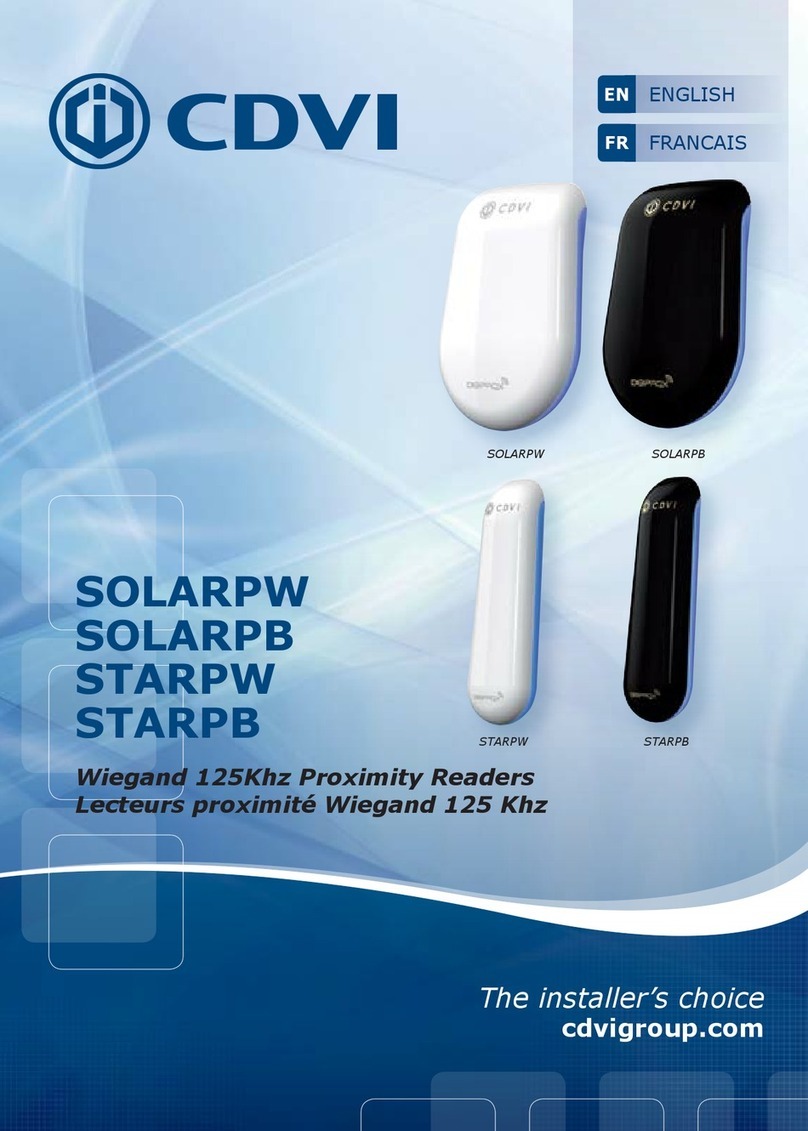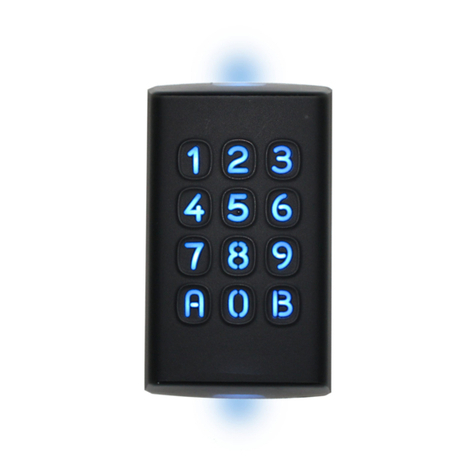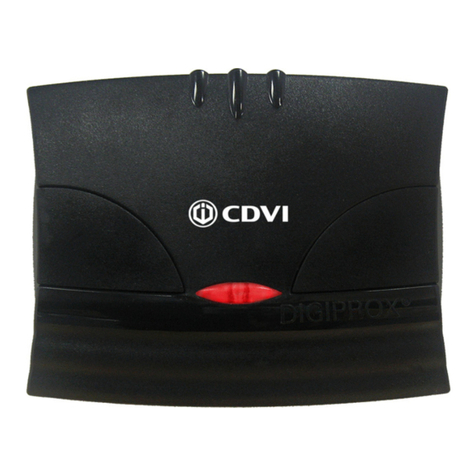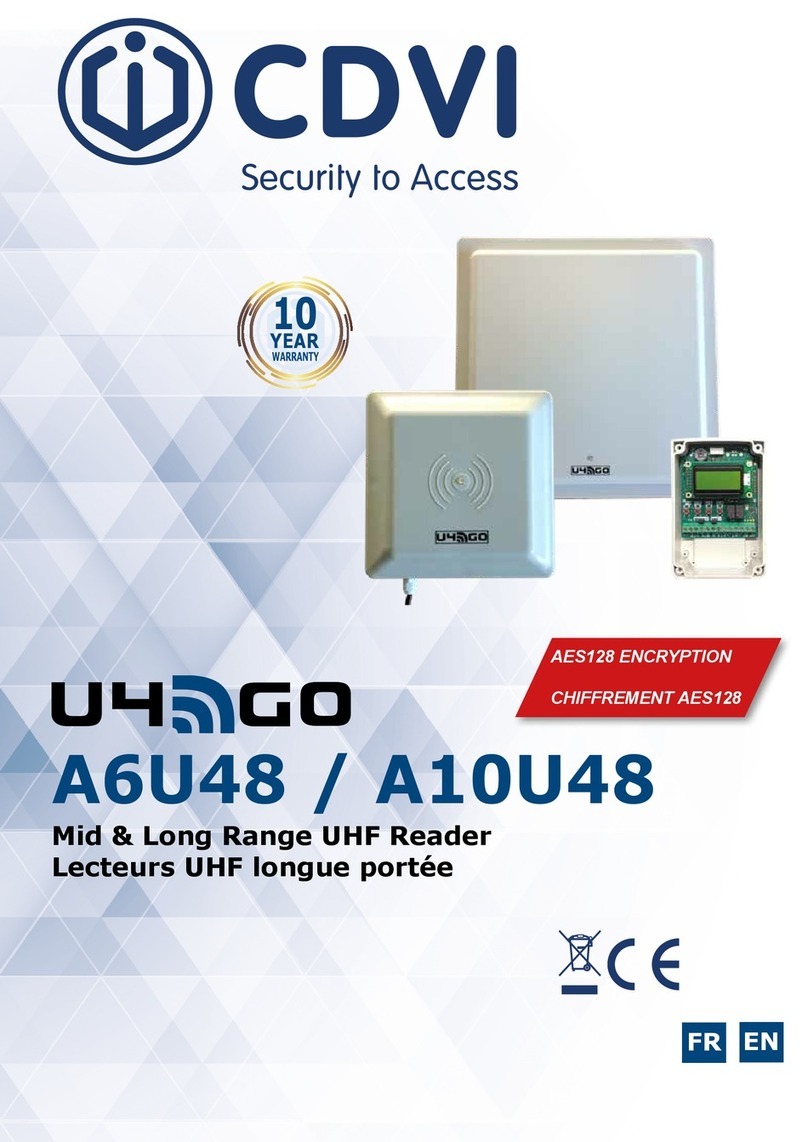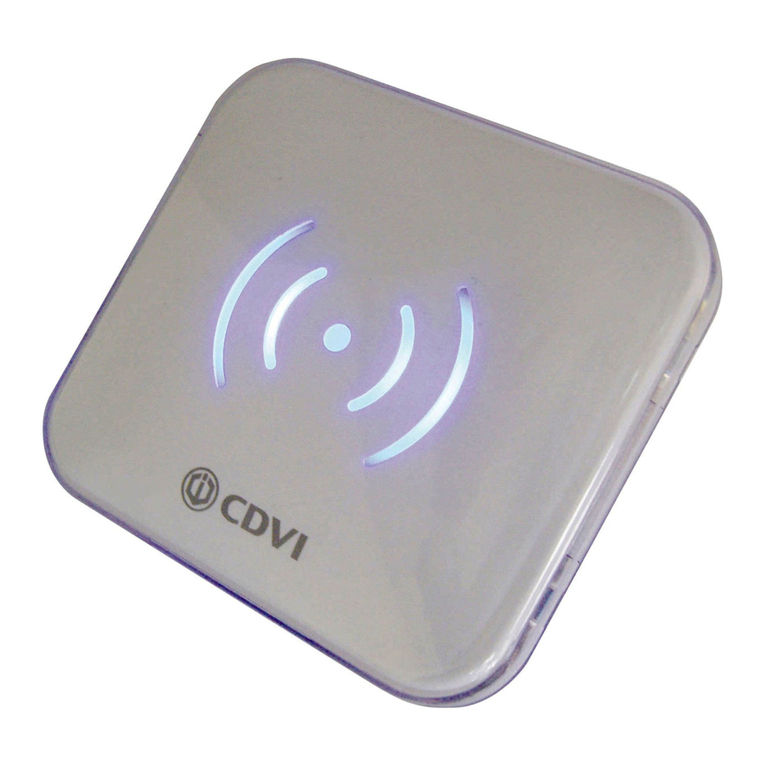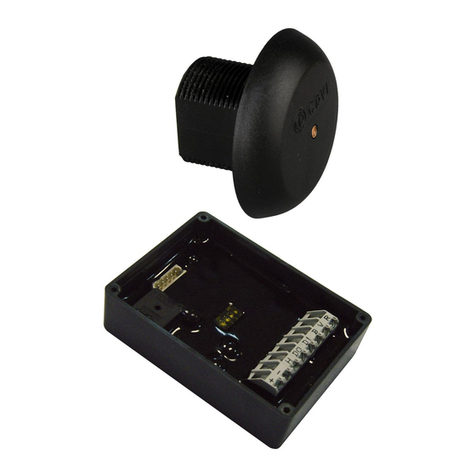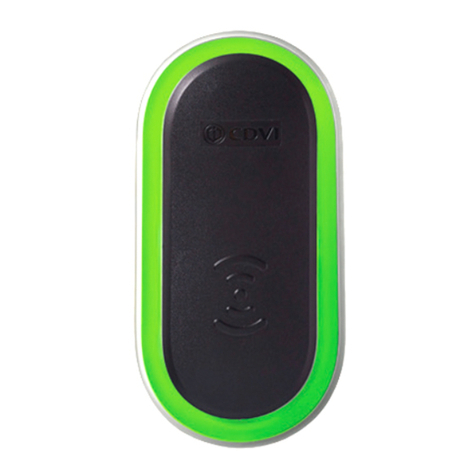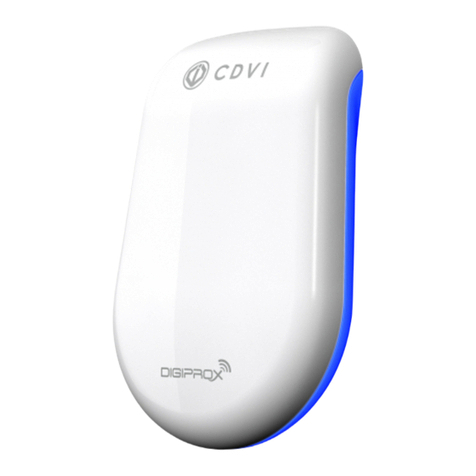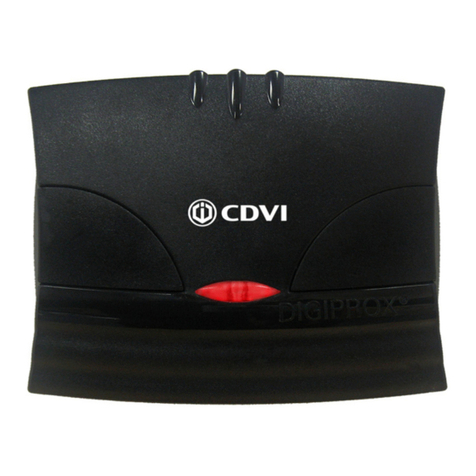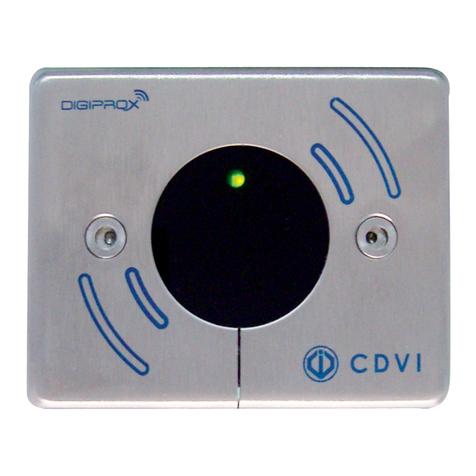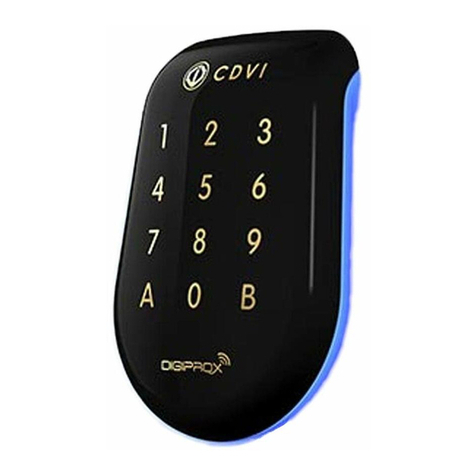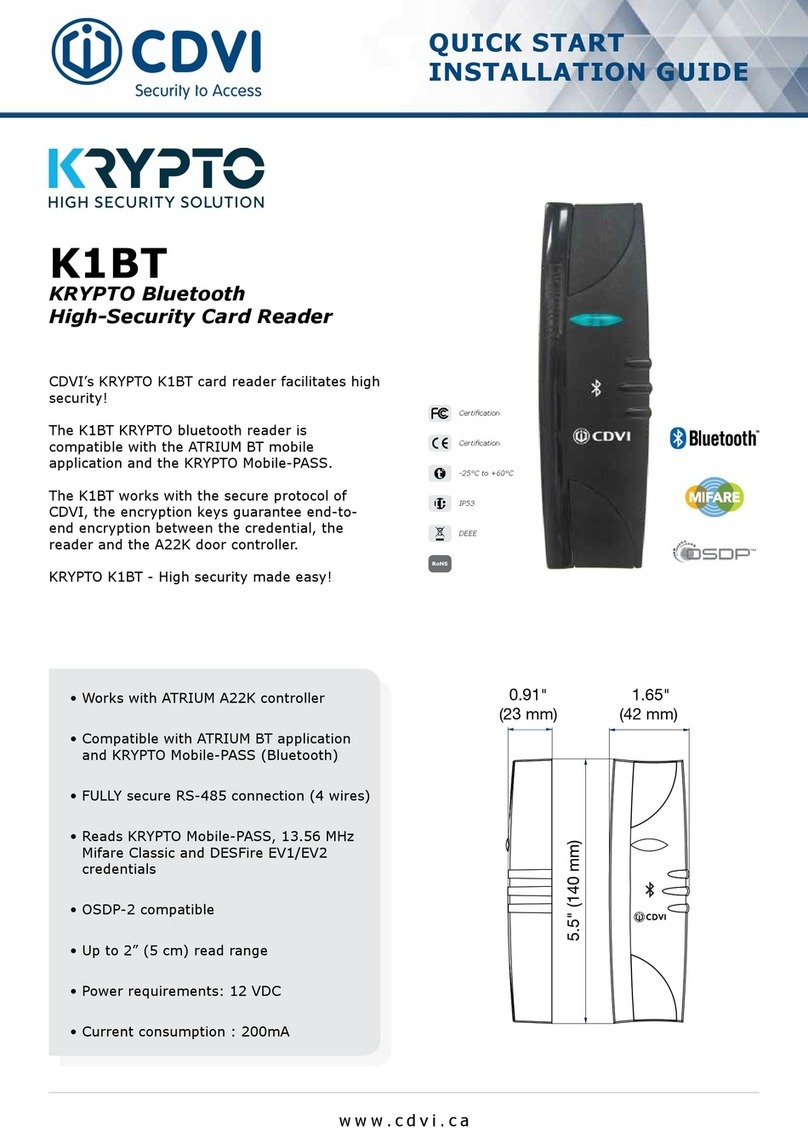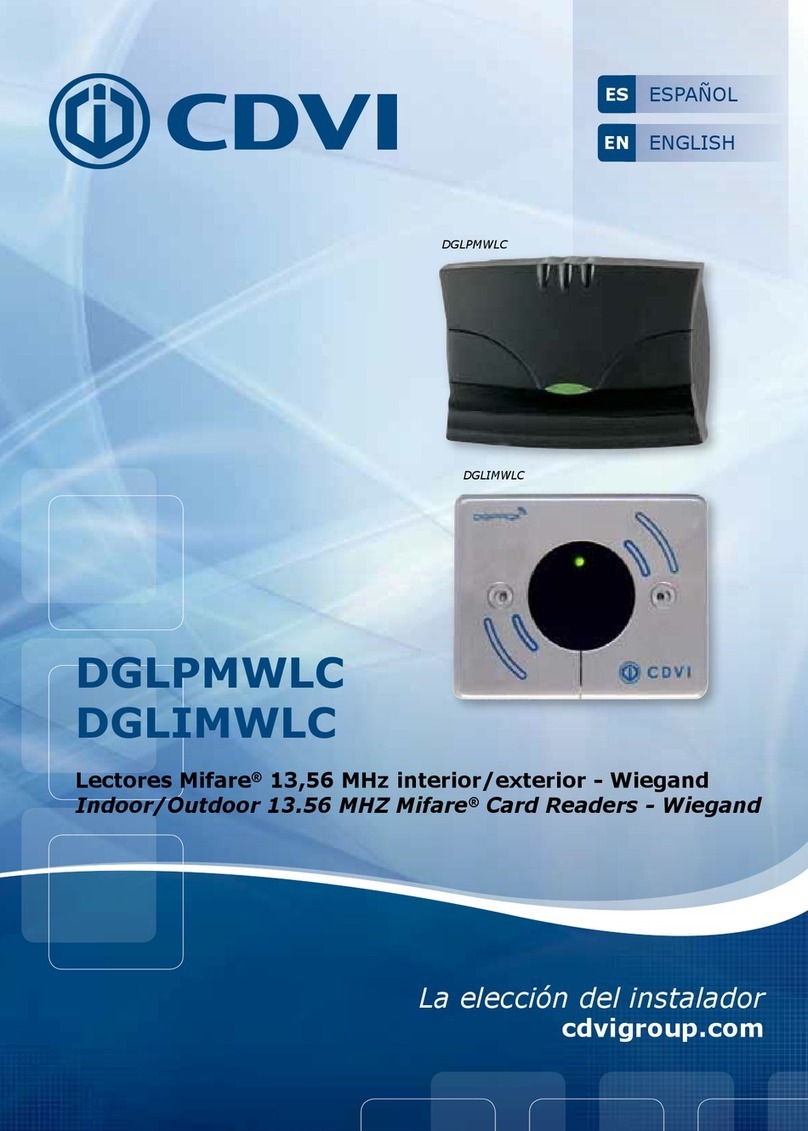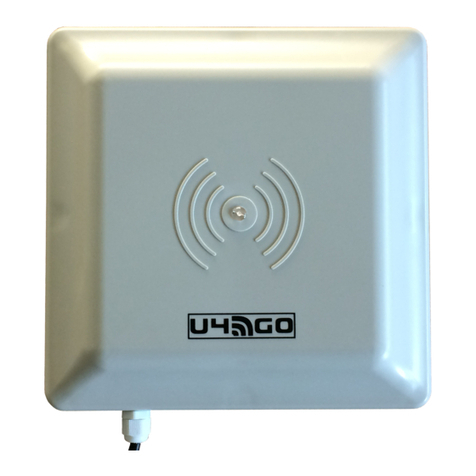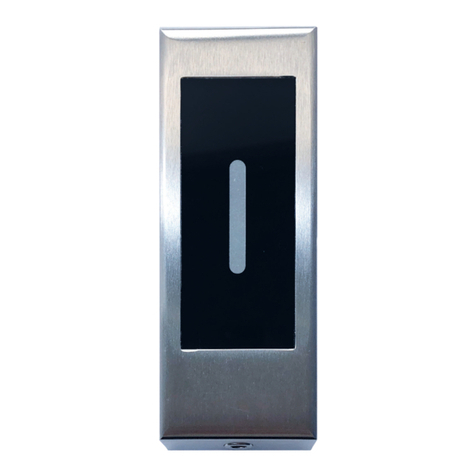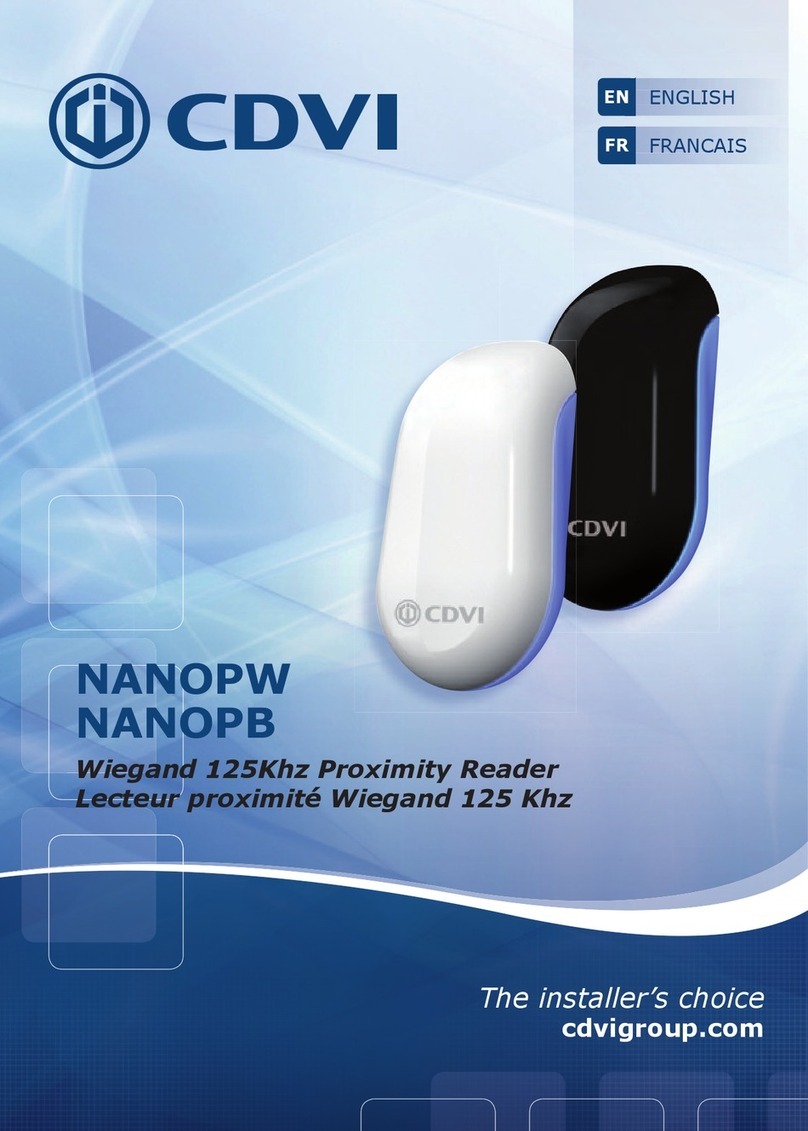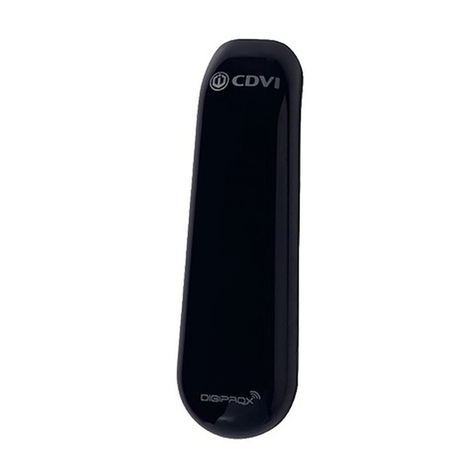
2cdvigroup.com
EN
DGLP60WLC
Hands-Free Proximity Card Reader - Wiegand
INSTALLATION MANUAL
1] PRODUCT PRESENTATION
26, 30 or 44 bits Wiegand outputs.
Connection to the controller via
the Wiegand bus interface (INTBUSW).
Polycarbonate reader.
Surface mount.
Reading distance from 30 to 60cm*.
Dimensions (L x W x D): 400 x 325 x 25mm.
Open collector outputs (Clock, Data 0 and Data 1).
Reading distance: up to 30cm with tags
(ref. PPC*) and up to 60cm with cards (ref. CPE*).
Self-contained electronics.
Audible and visual feedback.
Input voltage: 12V dc.
Consumption: 450mA.
Complies with European R&TTE directive 99/5/EC
and harmonised standards: ETS 301 489
and ETS 300-330-1-Ed 2001. Complies with applicable
EMC standards: EN 50133, EN 50130-4.
2] RECOMMENDATIONS
Installation recommendations
1.
To secure your installation, make sure
that the varistor is mounted in parallel
on the terminals of the lock with the power supply.
2.
Make sure that when mounting 2 Hands Free
readers, to keep a minimum distance between
the units to avoid reading the badges on both
readers simultaneously.
3.
When installing a reader near a loop conductor,
a conductor in the form of a close loop, a metal
plate then make sure to keep a cleared area
around
the reader of 1M on both sides and 1M at the back.
4. In some cases, put 0V to earth.
Mounting on a post
Avoid all conducting metals. Do not install
the reader in a closed conductor frame.
Recommended wiring
4 pairs 6/10th or AWG24 cable.
Environment
If you install these readers in a marine/salt
environment, we recommend spraying
a varnish coating on the terminal block
after wiring to prevent oxidation
.
Recommended power supplies
There are two suitable power supplies for these
Wiegand «proximity» readers: ARD12 and BS60.
Do not used switching power supply. These pro-
ducts must be powered in 12Vdc and the power
supply should be certied EN60950-1:2006/
A11:2009 standards and should be designed
to be a low power supply source.
Unfavourable situations
Avoid proximity to sources of electromagnetic
interference such as :
- IT transmission cables.
- Main power cables.
- Variators.
- Inverters.
- Computer monitors.
- Vehicle presence detection loop.
* This performance level is for an environment free from any electromagnetic disruptions.
IP53
-40°C to +70°C
CE certication
R&TTE certication
WEEE
Environmental
tests: vibrations
Thank you for buying our products and for the condence you placed
in our company.
